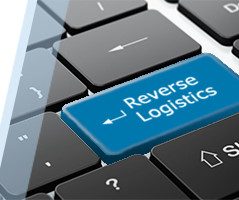10 July 2018
How to avoid the reverse logistics pitfalls
Reverse logistics moves goods from their natural final destination (clients, points of sales) backwards among the supply chain to either the initial producer or a new subject of the original chain.
Reverse logistics activities are, using few words, finding and collecting outcomes, the transportation, reception and sorting of returns (as for example unsold items from a retail).
What are the differences between forward logistics and reverse logistics?
| ARGUMENT | FORWARD LOGISTICS | REVERSE LOGISTICS |
| Demand forecast |
Linear |
Difficult |
| Product quality |
Uniform |
Non-uniform |
| Packaging type |
Uniform |
Non-uniform/ damaged/inexistent |
| Flow type |
One-to-many |
Many-to-one |
| Prospect to identify the origin of the flows |
Easy |
Difficult |
| Importance given to transportation and delivery rapidity |
High |
No high |
| Product traceability |
Full |
Reduced (absent during usage) |
| Warehouse management |
Optimized |
Difficult |
For a reverse logistics audit within your business, contact us.

